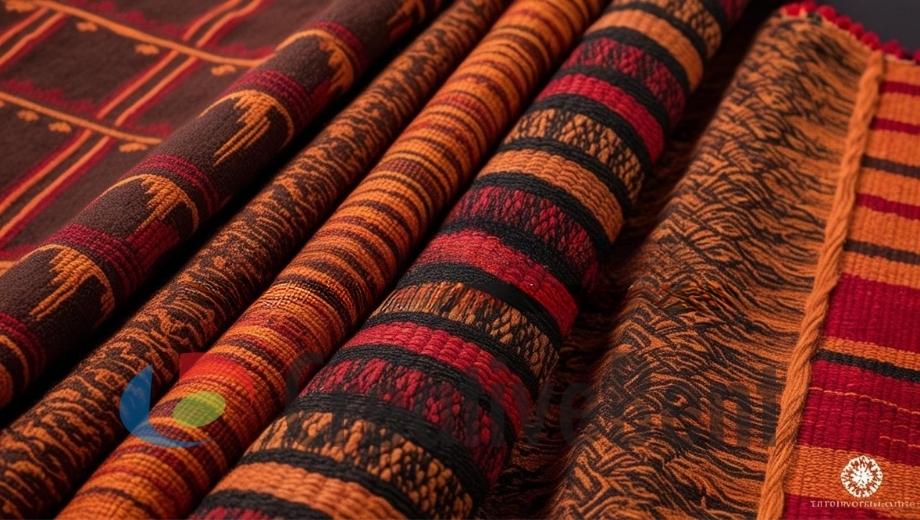
Indigenous textile art is a lively cultural expression that narrates stories of tradition, history, and identity. Indigenous groups worldwide have been producing incredible textile art for generations, using anything from complicated weaving techniques to meaningful motifs and colors. These creations serve as a link between the previous, present, and coming generations since they are more than just useful or beautiful objects.
Weaving as a Cultural Metaphor: The Loom of Life
Weaving represents life and creation in many indigenous cultures and is more than just a skill. Each thread that is woven into the fabric is a representation of a different aspect of life, weaving together lessons, experiences, and tales. The process of weaving develops into a ritual that links the weaver to their ancestors and cultural roots, and the loom is elevated to the status of a sacred tool.
Weaving Methods: Variety and Difference
Indigenous textile art is characterized by many weaving techniques, each of which is exclusive to a particular tribe or area. These methods have been handed down through the decades, conserving the beauty and innovation of indigenous peoples, from the Mayan backstrap looms to the Navajo upright looms.
A Visual Language Through Motifs and Symbols
Indigenous textile art frequently uses figurative symbols to depict numerous facets of cultural beliefs, natural occurrences, and everyday life. These images tell stories of creation, spirituality, survival, and resiliency via the construction of a visual language. Indigenous philosophies frequently emphasize the harmony between people and nature, which is reflected in the intricate patterns.
Colors: The Traditional Color Palette
Indigenous textile art makes extensive symbolic use of color. The textiles are generally connected to the local environment because colors are frequently sourced from natural sources, including plants, minerals, and insects. Each painting has additional layers of interpretation due to the colors’ ability to represent emotions, social standings, and spiritual beliefs.
Use in Rituals and Ceremonies: Spiritual Threads
Indigenous fabrics frequently have symbolic and spiritual meanings. They can be worn ceremonially, utilized in rites, or given as offerings to the gods. These textiles represent ancestor knowledge and divine favors and act as material connections to the spiritual world.
Identity Expression through Clothes
Indigenous textile work is essential for expressing affiliation and self. A village’s traditional attire, woven with regional motifs that represent the diversity of indigenous cultures, can be used to identify it from another. These textiles also convey a person’s sense of self by reflecting their background, social standing, and experiences.
Textile art’s role in cultural heritage preservation
Native American textile art is essential for maintaining cultural traditions. Indigenous groups uphold the memory of their ancestors, strengthen their cultural identity, and share their distinctive heritage with the world by continuing to weave traditional textiles.
Threats and Resilience in the Impact of Colonization
Because colonization interfered with traditional ways of life and stifled cultural expression, indigenous textile art was seriously threatened. But despite all difficulties, indigenous groups have exhibited incredible resilience in preserving their textile traditions. Indigenous artists of today frequently weave tales of survival, resistance, and adaptation while drawing inspiration from colonial cultures.
Fair Trade and Artisan Cooperatives for the Empowerment of Indigenous Artists
Fair-trade methods and artisan cooperatives are very beneficial to indigenous artists. These programs support the survival of traditional crafts and the economic sustainability of indigenous people by assuring equitable recompense.
Indigenous textile art today: a conversation between tradition and innovation
Many indigenous artists today are looking for novel ways to use textile art to communicate their cultural history. These artists produce avant-garde works that address both the past and the future by fusing conventional methods with modern designs.
Native American Textile Art in Museums: Displaying and Teaching
Indigenous textile art is becoming more widely acknowledged and displayed in museums and galleries throughout the world. These shows inform the audience about the intricate cultural backdrop of each item while also showcasing the artistic talent of indigenous weavers.
Native American Textile Art: A World Tapestry
Indigenous textile art weaves a rich tapestry of human inventiveness around the world, from the colorful fabrics of the Andean Quechua to the intricate beadwork of the Maasai. Every stitch narrates a tale, every motif discloses a conviction, and every color reflects the soul of the region. We learn to appreciate the diversity, tenacity, and wealth of indigenous civilizations as we delve deeper into the realm of indigenous textile art.





Thanks for sharing. I read many of your blog posts, cool, your blog is very good.
Thanks for sharing. I read many of your blog posts, cool, your blog is very good.